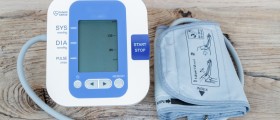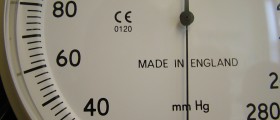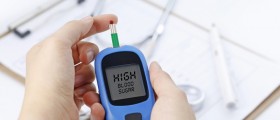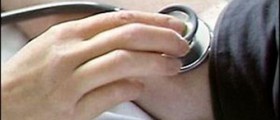High blood pressure, also known as hypertension, is diagnosed if the patient consistently has a blood pressure reading of 140 over 90 or any higher reading. In most cases, patients lead a normal life, and hypertension shows no symptoms. It is often suspected of hypertension as a result of an abnormal reading as a part of a systematic exam.
Types of Hypertension
Hypertension can be divided into two types: essential and secondary. The cause of essential hypertension is unknown. The cause of secondary hypertension may be an underlying cause, most commonly kidney disease, hormonal imbalance, or drug and alcohol abuse.
Essential hypertension is connected with several risk factors: age, obesity, family history, lack of exercise, salty diet, stress, or fatty diet.

Secondary hypertension occurs when blood pressure rises due to another health condition such as kidney infection, narrowing of the arteries, use of contraceptive pills or other hormonal medication, or illegal substance abuse.
High blood pressure rarely shows any signs, and most people don’t even experience the symptoms. Regular pressure checks may often be the only way to diagnose this condition on time and take the appropriate measures.
The other means of self-help that may prevent the development of hypertension are the anger management program, which may lower the patient's anxiety level, and cut down on salt. Most food has hidden salt in it, so it may be of extreme importance to start checking food labels for salt content and choose healthier options.
Complications
Hypertension causes a patient’s heart to pump harder, and arteries carry blood moving under tremendous pressure. If the heart and arteries carry on to work under this stress for long periods of time, they may weaken. This can affect the patient’s organs and general health.
Pregnant women suffering from hypertension may experience severe complications, which affect low birth weight or premature birth. Another serious condition is also related to high blood pressure levels: preeclampsia, which may lead to eclampsia - a life-threatening seizure that may endanger the lives of both mother and child and the second leading cause of maternal death in the US.
That is why an early diagnosis is of extreme importance. Hypertension develops without any symptoms, so regular checkups may be the only means of finding that patient’s health is in danger. The only way to know if one suffers from high blood pressure is to get tested.
Risk Factors
It is known that hormonal therapy and taking birth pills can increase blood pressure. Obesity, diet pills, and antidepressants may cause the same unwanted effect. Women with high-normal blood pressure levels that use birth control pills require special attention. They should not use tobacco and should be physically active. Age is a significant risk factor, but it should be remembered that hypertension is not only a disease in the elderly population.
- The prevalence of hypertension has increased over the last decade. Essential hypertension accounts for more than 90% of cases of hypertension and in a recent review, the lifetime risk of becoming hypertensive in industrialised countries was estimated to exceed 90%.
- The gender difference in blood pressure levels appears during adolescence but a shift in relative prevalence of hypertension occurs in the elderly. Premenopausal women have lower risk and incidence of hypertension compared with age-matched men but this advantage for women gradually disappears after menopause.
- After 65 years of age, a higher percentage of women than men have hypertension, and the gap will likely increase with the continued aging of the female population. In women between the ages of 65 and 74 years, the prevalence of hypertension is as high as 58%. The prevalence of hypertension among black women is particularly high and CVD rates in the United States are significantly higher for black females compared with their white counterparts.
- Approximately 40% of stroke cases, 39% of myocardial infarction cases and 28% of end-stage renal diseases are attributable to hypertension. Furthermore, hypertension, due to its greater prevalence, contributes more to the population burden of heart failure than does myocardial infarction and The Rotterdam study indicated that hypertension was more of a contributing factor in women than in men. The 5-year mortality after the onset of hypertensive heart failure in women is high, about 69%. Treatment of hypertension, however, can reduce the incidence of heart failure by almost 50%.
- The reason for gender difference in blood pressure levels is multifactorial and incompletely understood. There are several hypotheses including the potential role of sex hormones, the renin–angiotensin system (RAS), oxidative stress, endothelin, weight gain and sympathetic activation.
- Hypertension is an important risk factor for CVD in women. There are specific risk factors in women which may contribute to CVD risk. Preeclampsia has been shown to increase the risk for future hypertension by fourfold, and doubling the risk of future CHD compared with women with uncomplicated pregnancy.
Treatment
Habitual care and cautious monitoring are key to reducing the dangers of hypertension. In some cases, patients will use blood pressure medication as prescribed. It is important to continue using medications even if the blood pressure levels drop. A healthy diet, stress management program, lower salt intake, and regular aerobic exercise should also be introduced as a means of self-treatment.

















Your thoughts on this
Loading...